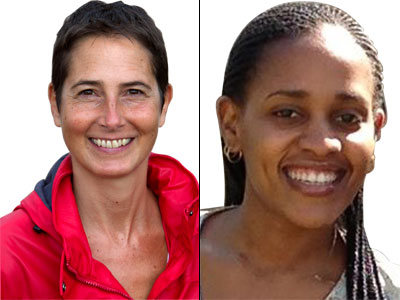Several may think that if Rwanda concentrates its efforts on economic transformation, the development of the social system may suffer, leaving the poor poorer and the rich richer. This is a legitimate concern, a real danger and unfortunately a reality in several African and developing countries.


Several may think that if Rwanda concentrates its efforts on economic transformation, the development of the social system may suffer, leaving the poor poorer and the rich richer.
This is a legitimate concern, a real danger and unfortunately a reality in several African and developing countries.
That said, economic development is the ONLY sustainable solution to the end of poverty and the end of reliance on international aid. How can Rwanda succeed in transforming its economy for the benefit of all Rwandans, and not at the expense of the general population?
Ultimately, this will be achieved when the middle-class is the largest proportion (say 60%) and the rich and poor only represent less than 20% each. Of course this is much easier said than done since most countries in the world are still struggling to get it right.
Rwanda’s EDPRS II programmes are designed to attain this honorable goal. Its main pillar; economic transformation aims at ensuring that the poor get involved in revenue generating activities, allowing them to become self-reliant; sustaining themselves and their families and at the same time contributing to the country’s development through paying taxes.
Given that taxes are the government’s revenue used to pay for adequate social services such as education and health, it is important to get more people to pay taxes via revenue generating activities in order to reduce the government’s dependence on aid and ultimately achieve self-reliance. How will this be done? Through the five main programs under Economic Transformation:
Inter-connectivity: This is about improving connectivity within Rwanda’s boundaries in order to better facilitate a doing business environment. This means ensuring that the infrastructure such as roads, electricity, IT and information is good enough across the country to bring together buyers and sellers in an efficient and effective manner. Simply said, it should not take a farmer 1 hour to reach a market 5 kilometers from home, but 15 minutes. This is why the government is prioritizing the improvement of the said infrastructure to encourage private contribution with public support.
Extra connectivity: We all know that Rwanda is landlocked, but rather than consider it as a problem, we should see it as an opportunity to become a hub for exports, logistics and services.
We need to leverage Rwanda’s central location, political stability, and strong governance to become a central point to do business in East Africa and beyond.
This is why the government is prioritizing connecting Rwanda to its neighbouring countries through roads, rail and open borders and to the rest of the world through air connection and trade agreements.
Private sector: Private companies generate taxes by selling products (VAT), employing people (income taxes) and making profits (corporate taxes) and this highlights why building the private sector is a must to reach middle income status.
That said, we want middle income status WITH a large middle class, and therefore the government is looking to prioritize the development of both foreign and local investors.
One of the strategies to achieve this is through attracting foreign investors who will build their supply chain within Rwanda and therefore expand and strengthen local SMEs. Another strategy is around capacity building and knowledge transfer through the use of expats and the development of technical skills programmes to satisfy the employment demand for skilled Rwandans.
Secondary cities: Urbanization; the expansion of people living in cities versus rural areas is a must and yet it remains a common challenge in Africa. Most countries have an affluent capital city with about 15% of the population living in it, and yet more than 85% live in under developed rural areas.
Rwanda is striving to differ by engaging in the development of 6 secondary cities (Rubavu, Rusizi, Huye, Nyagatare, Muhanga and Musanze) to have 35% of the population living in urban cities over the next five years. This can be achieved by providing the necessary infrastructure to attract both private investors and the government to relocate businesses and services in these centres, creating job opportunities and ultimately making them an enjoyable place to live.
Green growth: Rwanda is a small and densely populated country and this calls for careful planning to achieve sustainable economic growth that continues to protect the environment and the well-being of the population. It is in this light that the government will encourage green investments in projects like renewable energy and recycling, while at the same time ensuring sustainable urban development with rigorous urban planning.
We would like to wrap it all up by leaving youwith some food for thought: Money is too often a necessary evil since we need it to survive but the more we make the more we need, and therefore the less we share.
This reality is the main source of unbalanced and unequal economic development in the world but with the above-mentioned programs, Rwanda strives to be different. However, the government cannot do it alone solet us all contribute to a wining Rwanda where economic development creates a better place to live for all Rwandans by supporting these programs.
Get engaged today because if you wait for tomorrow, well, there will always be another tomorrow!


